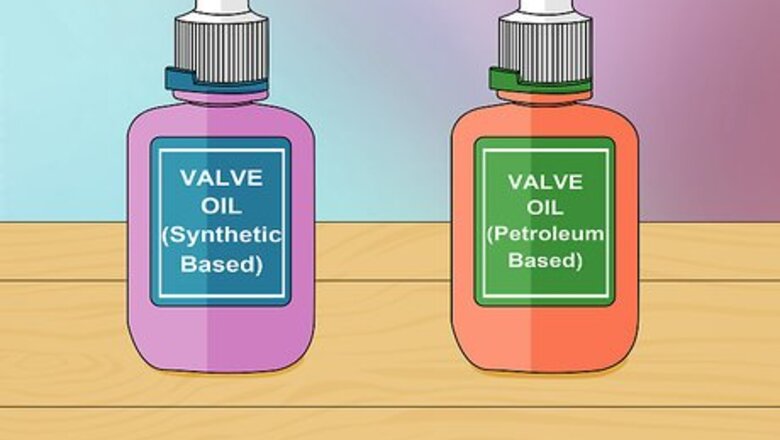
views
Choosing the Oil

Choose a valve oil. Valve oil helps clean and lubricate the trumpet, which will help you play your trumpet more efficiently, and can be purchased at most music stores or at various online retailers.There are two types of oils that are recommended to use for brass instruments: synthetic-based oils and petroleum-based oils. Deciding between the two is often a matter of personal preference and determining which works better with your instrument. Petroleum-based oil works best with brand new trumpets. Petroleum oil is lighter and won’t be as effective on worn-in trumpets. You may have to reapply this oil more often if you use it on an older instrument. Synthetic oils are typically more expensive, but they are better able to reduce friction in tighter valves. In addition, these oils do not evaporate as quickly, so you may not need to oil your valves as regularly with this type of lubricant. Try various types and brands of valve oil to see which you prefer. Each person’s experience will be different, and the oil will react differently to each person’s saliva! Be sure not to mix the synthetic oils and petroleum-based oils together.
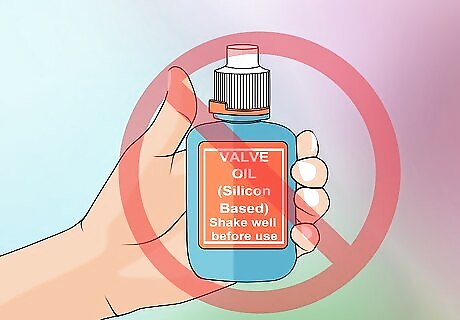
Avoid silicone-based oils. Some valve oils have added silicone or grease. These should be avoided. These oils can promote moisture build-up, which can cause corrosion on the trumpet’s pistons, casings, and slides. If an oil label states “shake well before use,” this could indicate that it is a silicone-based oil. Be sure to read the labels before buying a valve oil.
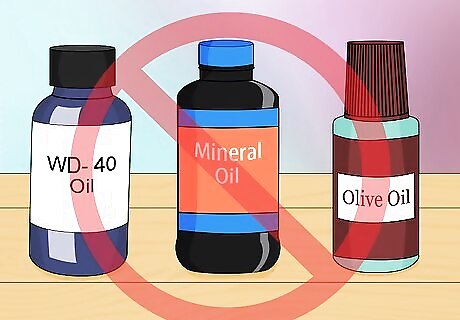
Do not use home-based oils. Using WD-40, mineral oil, olive oil, or other oils found in your home are not recommended for oiling trumpet valves. Although it may be tempting to use these since they are typically easily accessible, it is wise to wait until you can buy proper valve oil. These home-remedies can severely damage a brass instrument.
Oiling the Valves
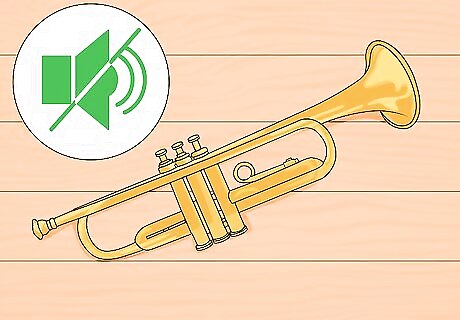
Position your trumpet. To begin, you may wish to place the trumpet on a flat surface to oil the valves, or you can hold the trumpet with one hand with your fingers wrapped around the valve casing. Whether you place it on a flat surface or hold it, be sure that the trumpet is secure so that you do not drop it and cause damage to the instrument. It is recommended that you oil the valves in a quiet place where there is not a lot of activity so the instrument won’t be accidentally knocked over.

Oil the valves one at a time. Unscrew the valve cap counter-clockwise, and place it to the side where you can easily access it later. With the cap successfully removed, slide the valve upward. Be sure the valve is up far enough so that you can see it, but do not completely remove the it from the instrument. Placing valves back into the instrument can be tricky if they are fully removed.
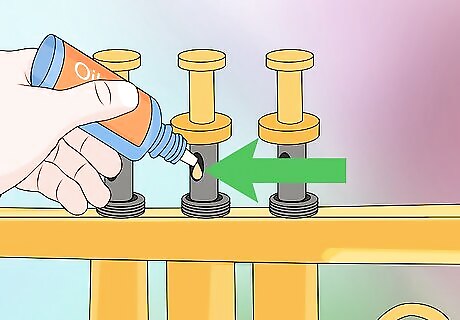
Add drops of oil. While you have the valve partially out of the casing, place a generous amount of oil at the bottom of the valve on the shaft. Do not worry about adding too much oil to the instrument. Although some do not like to over oil their trumpet, there has been no evidence to suggest that it will damage the instrument. Just be sure that the oil does not get in the holes and inside the trumpet. The valves may seem sticky after oiling if debris collects on the oil. To fix this, gently remove the valve and wipe it with a clean cloth. Be sure to re-oil the valve before inserting it back in the trumpet.
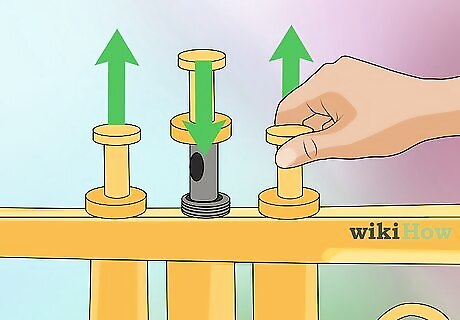
Coat the valve with oil. After adding the oil to the valve, gently slide the valve up and down within its casing several times. This motion will help ensure that the valve and the valve casing are both adequately coated with oil. With sufficient and even lubrication, the valve action on the trumpet will be faster and smoother, making it easier and more enjoyable to play the instrument.
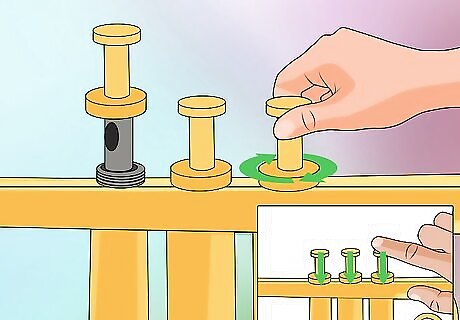
Place the valve into its correct position. Slide the valve down into the casing. Twist the valve clockwise until you hear the valve guide click back into place. After hearing the click, press the valve a few times to be sure that it works properly, is moving with easy, and that it is securely in place.
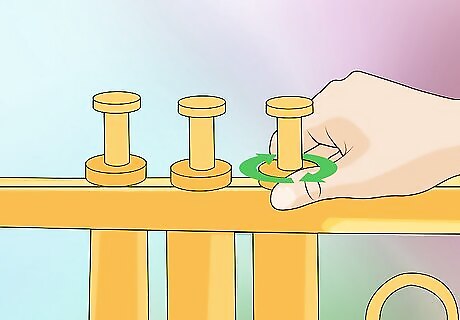
Replace the valve cap. With the valve securely back into place, return the valve cap and twist it clockwise so that it fits snuggly. The valve cap should be placed on the thread straight on. Make sure the cap is not at an angle while fastening it back into place. An angled cap can damage the threading and make it impossible to properly secure the cap during future oiling sessions.
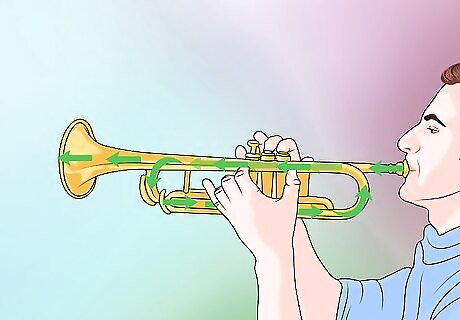
Check the air flow. Blow into the trumpet to ensure that the air is correctly blowing through the instrument. If the valves are not placed back into their casings properly, the instrument will be impossible to play. If the air is not flowing through the trumpet, then the valves have most likely been secured incorrectly. Check the valves one at a time to see that they have been properly placed back into their respective slots.
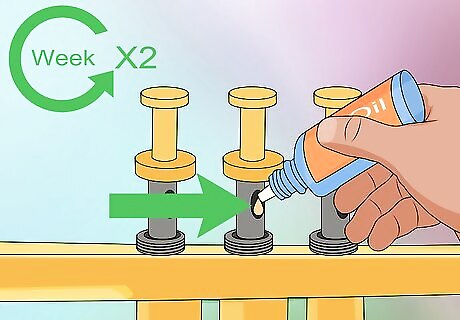
Oil the valves frequently. You do not need to oil the valves each time you play, but it is important to oil them 2-3 times each week or whenever the valves are not moving as efficiently as possible. This will help keep your instrument clean, improve the instrument's longevity, and help prevent corrosion. Not to mention, it will help make playing your instrument easier and more enjoyable!

















Comments
0 comment